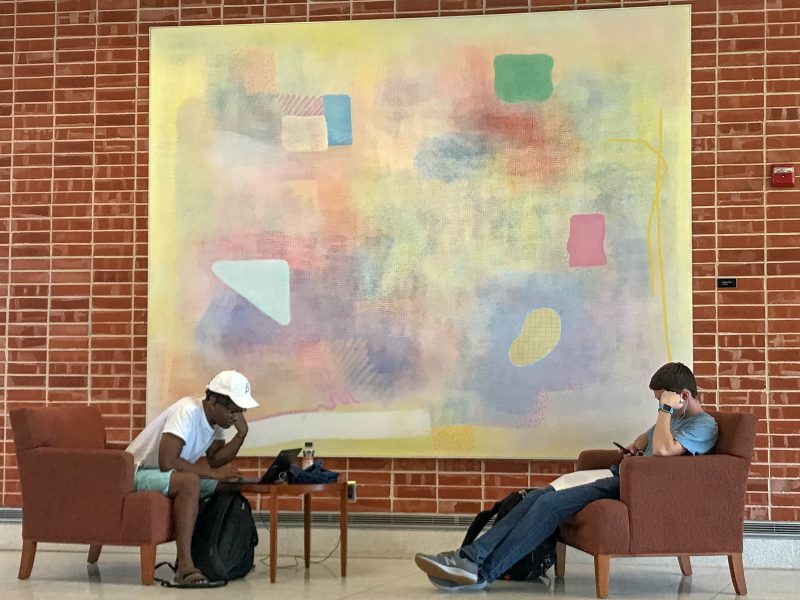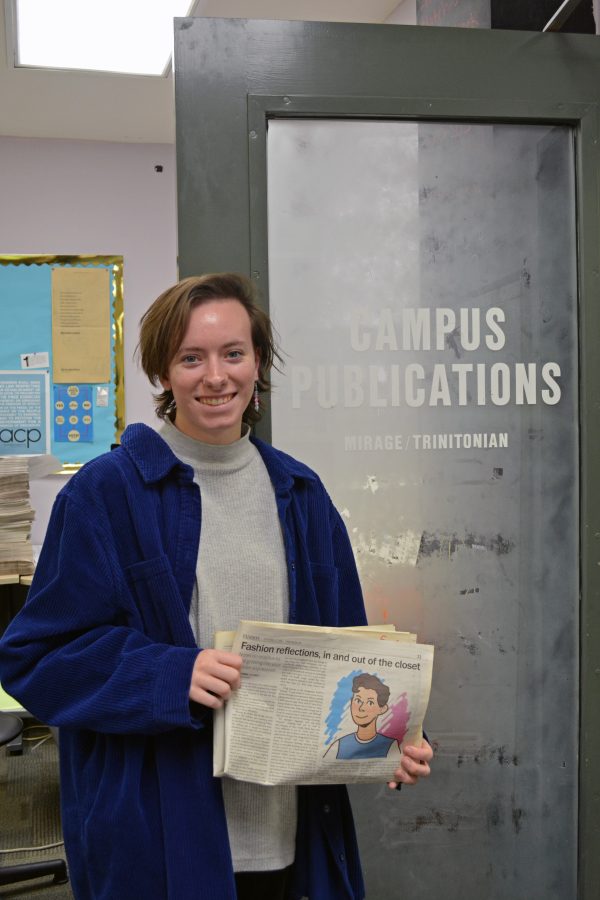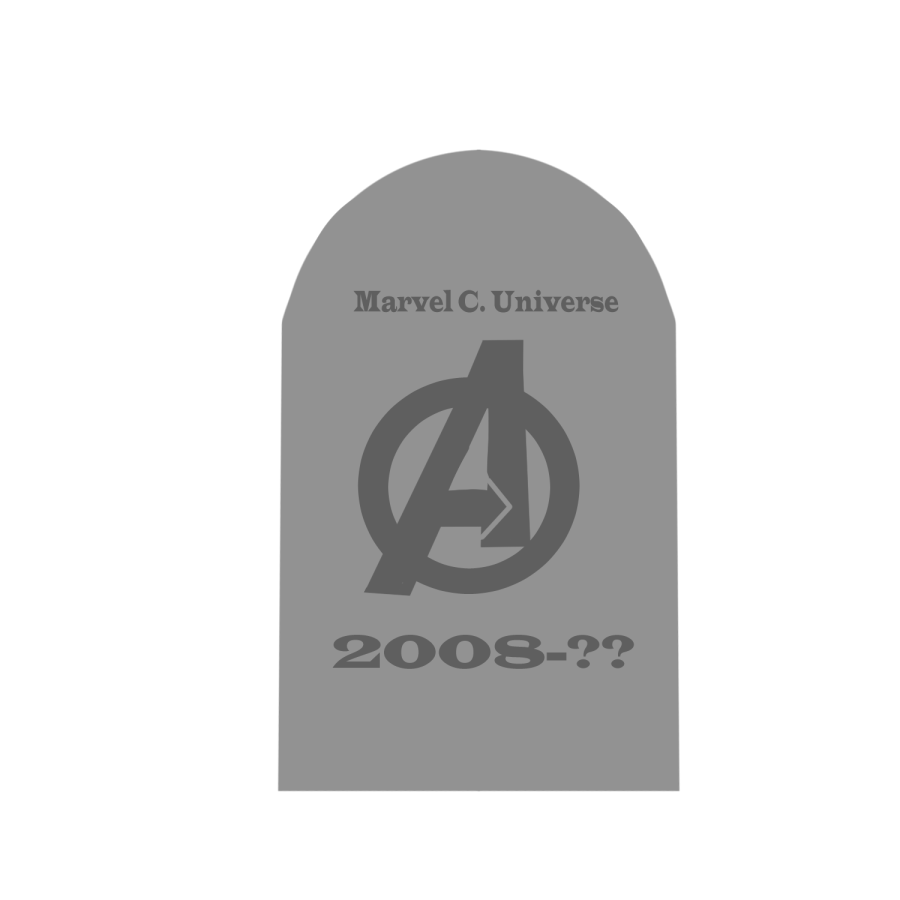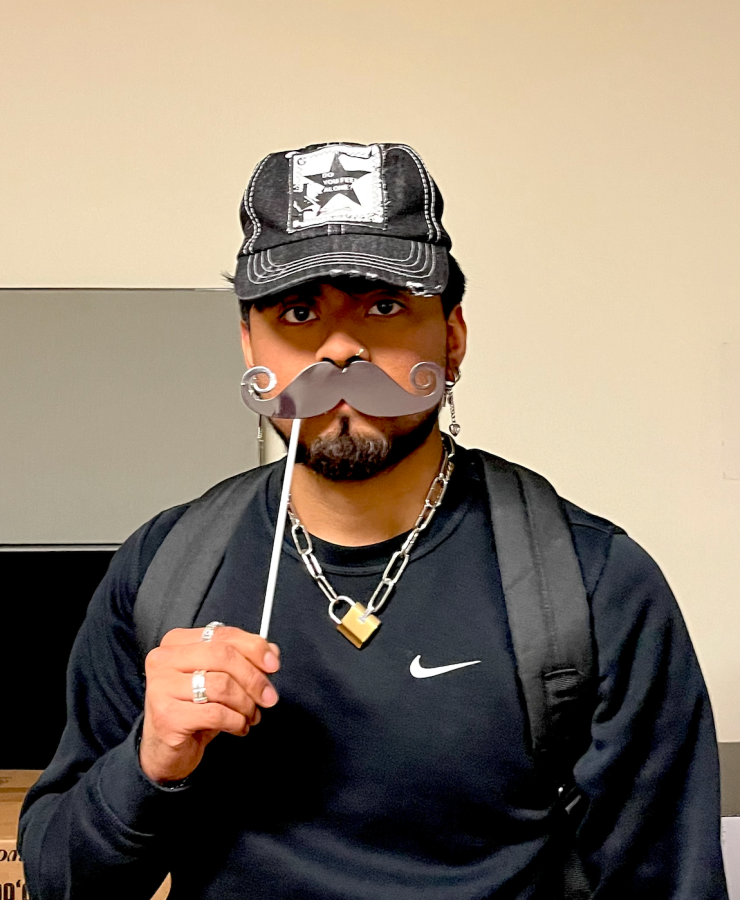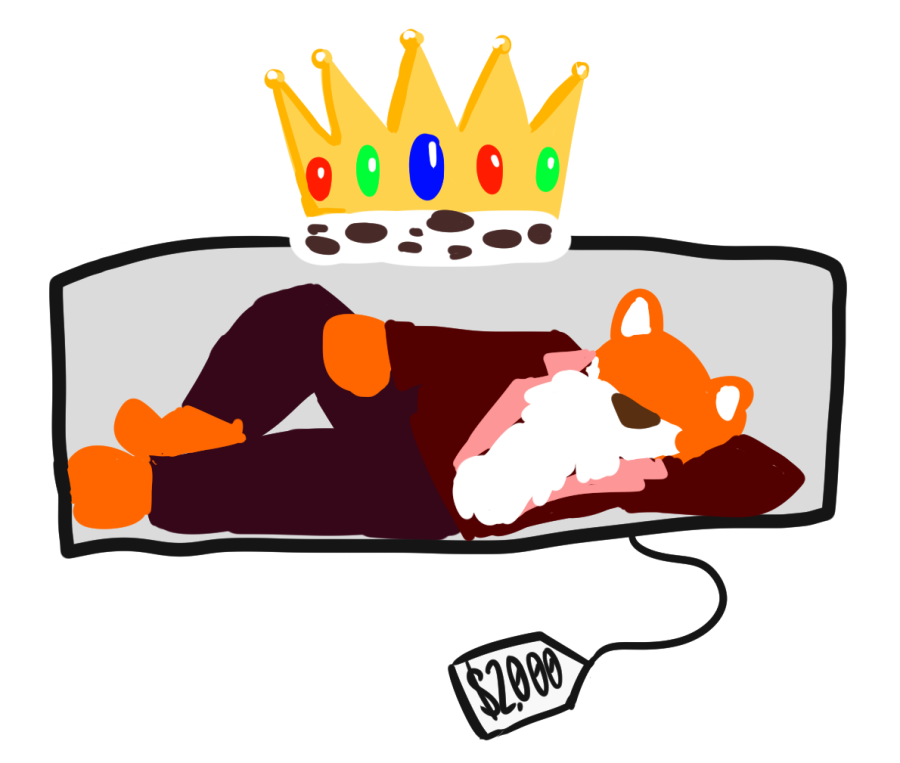At Trinity, it’s nearly impossible to get from Point A to Point B without catching a glimpse of the various works of art on display throughout campus.
Barbara Hepworth’s “Conversation with Magic Stones” near Coates Library is hard to miss, giving off a certain thrall to passers-by to walk up and take a closer took. There are also pieces by renowned artists, such as Robert Rauschenberg, located in Northrup Hall, and recently graduated students’ work has been showcased in Coates Library.
Much effort has gone into creating this selection of pieces located around campus. Lisa Endresen, visual resources creator in the Art and Art History department, has made it her goal to create more awareness of the art that’s displayed.
“Starting next year for Trinity’s 150th [Anniversary], we’re going to implement these things called Art Walks where we can walk through the campus and say, ‘Do you know who this is? This is the most amazing [piece],’ ” Endresen said.
Trinity’s art collection has been built up primarily through purchases made by the university and donations by benefactors such as Jane and Arthur Stieren and Jim and Janet Dicke.
“A lot of the work is through donations, and then [there’s] the Dicke-Smith collection,” said Randy Wallace, studio manager in the Art and Art History department. “I think a lot of those [pieces] were on long term loan.”
Along with these means of collection, commissioned works by members of Trinity’s faculty can be spotted in academic buildings on campus. Work by art professor Kate Ritson can be found in the Center for Sciences and Innovation building and work done by art professor Liz Ward is on display on the first floor of Coates Library.
Areas of Coates Library also feature works of art by recent Trinity graduates as part of a program to purchase and collect student work. One such collection of five pieces by Katy Freeman, who graduated in May 2017, can be found on the second floor of the library.
Head of Instruction Services Benjamin Harris is one of the Coates Library staff members working on the program to display student work.
“The art purchase project started about five years ago. The goal was to collect student art and to celebrate student art by adding it to the library’s collection. We buy several [pieces] a year,” Harris said. “What we do right now is we go to the Senior Show, and we get to hear from each of the artists, look at the works and select pieces for the collection.”
As more art is put on display around campus, Endresen has focused her efforts on allowing greater access to information on Trinity’s art collection.
“We don’t have that quite yet. But that’s what I’m actively working for,” Endresen said. “We have a list of everything that we have and the values, but I’d like something that students could look up, and say, ‘Oh, I’m actually doing a paper on such and such. I had no idea we had this on campus!’ … So not yet, but hopefully.”
Even while Endresen is still hard at work on creating such a database, there’s still a diversity of art left to discover on campus for those who go searching.
“What Trinity is good about doing is putting up signs,” Endresen said. “For instance, if you walk into Northrup [Hall] it’ll say that ‘this long piece on the left is by Ansen Seale.’ We’re trying to get better at labeling the art and mostly to just notice when you walk by and say, ‘Oh, that’s by so and so!’ but it does make for these little treasures so that you walk around the corner and you’re like, ‘Oh my God, Robert Rauschenberg! Holy cow!’ ”

